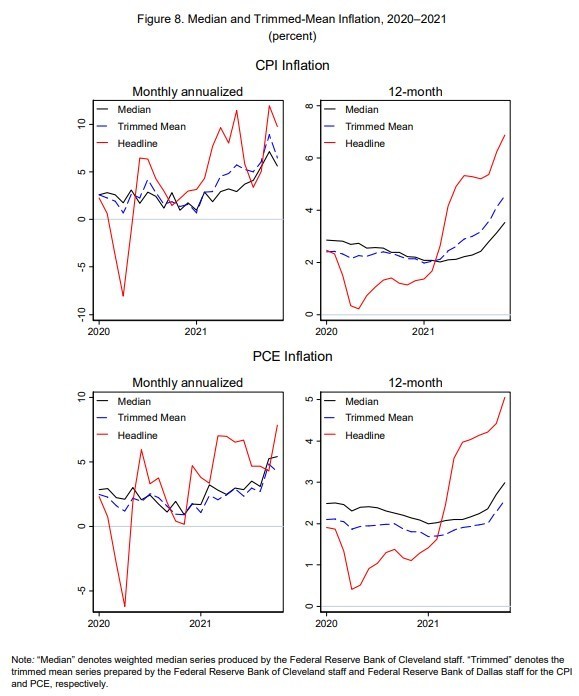Claudia Sahmという元FRBエコノミストが12月19日に以下のようなツイートを行った。
PS there is a weird tension (often tinged with disrespect) between academic macro and Fed macro. I saw it right away when I got to the Board. I didn't quite understand it, but that didn't take long. I am vocal about it now. academic macro has done immense damage in the world.
(拙訳)
追伸:学界マクロとFRBマクロの間には、(軽蔑の色合いが付いていることが多い)奇妙な緊張関係がある。FRBに来た時に私はすぐにそれを目にした。当初はそれを完全には理解できなかったが、間もなく理解した。今はそれについて声高に語っている。学界のマクロは世界に多大な損害を与えた。
これをクルーグマンが拾い上げ、以下のような連続ツイートを行った。
Absolutely. As someone who began my academic career in the late 70s, as equilibrium macro was tightening its grip, we all knew that fundamental business cycle issues were a minefield nobody with a reality sense would enter 1/
Try to publish anything in which monetary policy — let alone fiscal policy — did what it clearly did in the real world, and you would be blockaded from the journals and frozen out of appointment committees. You had to keep yr views private and build your reputation elsewhere 2/
International macro was a bit better because Rudi Dornbusch's work kept sticky-price macro respectable. But even so you had to frame your work as being abt exchange rates or financial crises and hope people didn't notice the Keynesian core 3/
As I wrote elsewhere, central bank research depts kept the forbidden knowledge alive — "If we’re living in a Dark Age of macroeconomics, central banks have been its monasteries, hoarding and studying the ancient texts lost to the rest of the world." 4/ https://princeton.edu/~pkrugman/keynes_and_the_moderns.pdf
Truly a sad story all around. And still not over 5/
(拙訳)
全くその通り。70年代後半に学界でのキャリアを開始した者として、均衡マクロ経済学が支配を強めていた当時、基本的な景気循環の問題は、現実感覚を持つ者は誰も立ち入ろうとしない地雷原であることを我々は皆知っていた。
現実世界で金融政策――財政政策は言うまでもなく――が明確に実施したことを行うような論文を何か出そうとすれば、学術誌からは絶縁され、大学の選考委員会からは締め出された。自分の見解を内に秘めたまま、評判を別のところで打ち立てる必要があった。
国際経済学は、ルディ・ドーンブッシュの研究によって粘着価格のマクロ経済学が尊重される地位を維持していたため、少しましな状況だった。しかしそれでも、自分の研究は為替相場や金融危機についてのものであるとして、ケインジアン的な中核に誰も気が付かないことを願う必要があった。
krugman.blogs.nytimes.com
別のところで書いたように、中銀の研究部門は禁じられた知識を生かし続けた――「我々がマクロ経済学の暗黒時代を生きているのだとすれば、中銀はその修道院で、外界では失われた古代の文書を保蔵し研究していた。」https://princeton.edu/~pkrugman/keynes_and_the_moderns.pdf
すべてが本当に残念な話だ。しかもそれが今も終わったわけではない。
ちなみに冒頭のSahmのツイートは、ジョン・スタインソン(Jon Steinsson)とのFRBのインフレ対応を巡る論争の後記とでも言うべき連続ツイートの一つで、当該ツイートの前後では以下のようなツイートを行っている。
I try to do the impossible. make macro accessible and fun, most clearly reflected in my tweeting. AND maintain my creds as an expert. I have taken a hit on the latter since 2020, especially in academic macro. Fed people largely forgive or ignore me. though I can never go back.
I've been angry at academic macro since 2008 when I realized much of my PhD training in macro theory was useless and deeply misguided. most important thing I got at Michigan was a deep respect for data, all kinds of data. learned how to use them at the Fed and real-world macro.
as for the can't go back to the Fed staff, that's harder to explain. told my boss once that I wanted to be a cog -- no staffer is irreplaceable and all are part of a machine -- but I wanted to be a shiny cog. he rolled his eyes. I am too shiny now, for better and often for worse.
PS there is a weird tension (often tinged with disrespect) between academic macro and Fed macro. I saw it right away when I got to the Board. I didn't quite understand it, but that didn't take long. I am vocal about it now. academic macro has done immense damage in the world.
PPS an academic macro is absolutely, totally oblivious to it. you all can see it in public. grrrrrr. but I can assure you behind closed doors it's often worse. whatever, there is good macro happening in the ivory tower and outside it. I try to bridge but not always easy on me.
(拙訳)
私は不可能に挑戦している。マクロ経済学を取っつきやすく、楽しいものにしようとしており、そのことは私のツイートに最も明確に反映されている。その上、専門家としての評判を維持しようとしている。後者については特に学界マクロにおいて2020年以降非難を浴びている。FRBの人々は概ね私を許容するか無視するかしている。ただ、決してFRBに戻ることはできないだろう。
博士課程で受けたマクロ理論の教育の多くが無益で大いに見当違いであったことに気付いた2008年以降、私は学界マクロに怒っている。ミシガンで学んだ最も重要なことは、データ、あらゆる種類のデータを大いに尊重することだった。FRBと現実世界のマクロで、その使い方を学んだ。
FRBのスタッフに戻れないという点については説明が少し難しい。かつて上司に、私は歯車になりたい――替えの利かないスタッフなどおらず、全員が機械の一部なのだ――、だが、輝く歯車になりたい、と言ったことがあった。彼は呆れた顔をした。今の私は、良くも悪くも――悪い方が多いが――輝きすぎている。
追伸:学界マクロとFRBマクロの間には、(軽蔑の色合いが付いていることが多い)奇妙な緊張関係がある。FRBに来た時に私はすぐにそれを目にした。当初はそれを完全には理解できなかったが、間もなく理解した。今はそれについて声高に語っている。学界のマクロは世界に多大な損害を与えた。
再追伸:マクロ経済学は全くもって完全にそのことに無自覚である。その点は公然となっている。ぐぬぬぬ。しかし密室ではしばしばもっとひどいことになっていることは保証できる。いずれにせよ、象牙の塔とその外側で、良きマクロも生まれている。私はその橋掛けをしようとしているが、風当たりが強いこともある。
